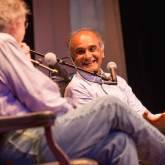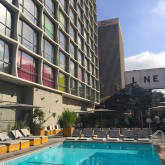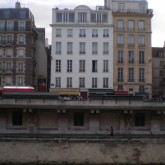Surfers search the world over for “the perfect wave,” and Costa Rica’s Pacific coast is a destination on everyone’s list. With legendary breaks, like Witch’s Rock and Ollie’s Point, and laidback surf towns, like Tamarindo, Jaco, and Dominical, lining the coast, there’s always a gnarly wave to catch. The endless black sand beaches and warm waters of the Pacific Ocean also make Costa Rica an ideal destination to learn to surf.
Brett Schroeder of Brett’s Board Rentals is an American ex-pat from Houston, Texas who’s made Esterillos home for the last decade. He spends his days surfing and teaching others how to surf.
The Lesson
Stay in Esterillos Este at Alma del Pacifico, a boutique resort with 20 private oceanfront bungalows, and Schroeder will bring the boards and the instructors to you. The student to teacher ratio is about two to one, so that means lots of hands-on help.
Your two-hour beginner lesson starts on land where Schroeder will get you oriented with the art of popping up. That’s the transition from on your stomach, to on your feet. You’ll determine whether your stance is regular (left foot forward) or goofy (right foot forward), and learn some basic steering maneuvers, like front side and back side turns. After a few practice pop ups, it’s time to strap your leash to your rear foot and hit the surf with your long board.
In the water, Schroeder and his team will show you how to position your body on the board with your toes reaching down towards the board’s tail. In the beginning, they’ll help you with timing and push you into the wave, telling you just when to “paddle, paddle, paddle!” Once you’ve caught the wave, it’s time to pop up with a wide stance on the board, knees bent, and arms out for balance. Wiping out is part of the sport, and there’s no need to worry because with beginner waves, you’re not going to get too beat up.
Once you catch that first wave and ride it into shore, you’ll soon realize the rush that surfers get hooked on. You’ll be eager to paddle back out and catch another one. As the lesson goes on, Schroeder and his instructors will challenge you to time out the waves and paddle into them on your own. He says that by the end of a beginner lesson, you should be able to stand up and ride a wave into shore. If you opt for a second intermediate lesson the next day, you’re well on your way to becoming a proficient surfer.
Surfing Season in Costa Rica
Costa Rica’s seasons are divided into rainy season (May to November) and dry season (December to April). While surfing is a year round sport, conditions in the dry season are ideal. This is also the peak tourist season, which can mean higher rates and beaches with larger crowds. Rainy season calls for bigger and sometimes “messier” surf, as well as afternoon rain showers, but there’s always a beginner break to be found.
Pre-Surf Lesson Tips
Surfing is an athletic sport, and Schroeder says “you’ll use muscles you never knew you had,” such as the neck, back, and shoulders for paddling. If you want to get into peak physical condition before your surfing vacation, he recommends swimming and building cardio endurance.
Post-Surf Lesson Tips
You’ve surfed in Costa Rica and now you’re hooked. How do you keep it up once the vacation’s over? Yes, it definitely helps to live in a coastal area with waves. If that’s the case, contact a local surf school to find out where they’re surfing for the day, and then head to that spot. Make sure you’ve got a big enough board, which for beginners is at least nine feet. For safety reasons, always surf with a partner.
If you don’t happen to live at the beach, you might just have to join the rest of the nomadic surfers of the world in search of the perfect break. What’s next? Southern California’s Huntington Beach, Oahu’s North Shore, Australia’s Bondi Beach? Surf’s up!
A version of this story originally appeared on Travel + Escape






